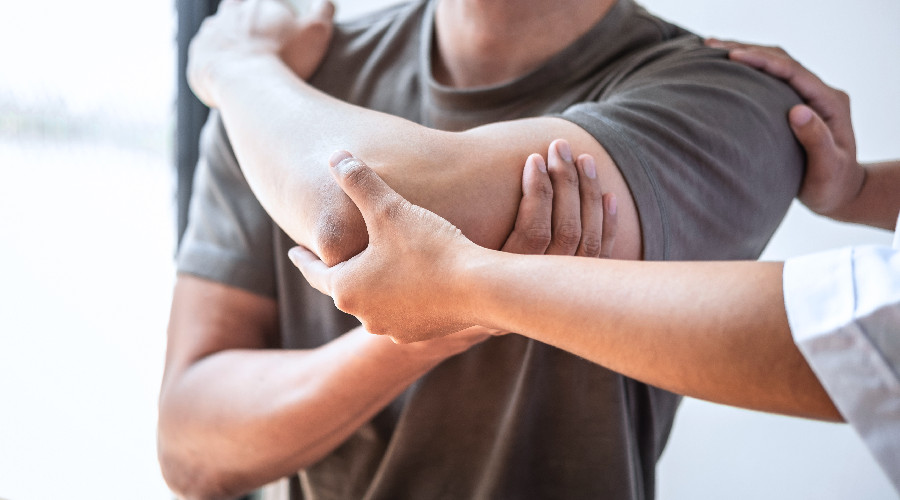Hypermobility affects thousands of people in the UK and it can be difficult to identify. Joint hypermobility refers to the way in which your joints move, with a focus on the hyper aspect. If you have joint hypermobility, it is likely that you can move your joints beyond the normal level of movement. This includes your knees, elbows, wrists, and fingers.
About The Carl Todd Clinic: Physiotherapy treatments | Expert treatments from sport massage therapists | Osteopathy treatments and more. Find a physiotherapy clinic near you.
Joint hypermobility is rarely a serious medical condition, but you may need to do certain exercises to ensure your joints are not in pain. In this article, we are going to be looking at joint hypermobility in detail, including signs, treatment, and living with hypermobility.
What Is Hypermobility Syndrome?
Hypermobility syndrome means that you have extra flexible joints. If you have hypermobility, you will probably be able to extend your joints beyond what is regarded as normal. You will probably be able to bend your fingers, wrists, and elbows more than usual, and you will not feel pain from this.
Hypermobility affects a wide range of people, but it is prominent in younger and middle-aged people. As you get older, it is likely that your hypermobility will get better.
Signs of Hypermobility
One of the biggest signs of joint hypermobility is abnormally flexible joints, including wrists, elbows, ankles, and knees. Additionally, other common signs of hypermobility are: frequent tiredness, poor balance, dizziness, stiff joints, and cracking or popping joints.
When Should You Seek Help?
If you have some of the following signs and symptoms, you should speak to an osteopath, physiotherapist, or doctor.
- If you feel continuously fatigued
- If you can dislocate your joints
- If you suffer with joint sprains and strains
- If you feel a lot of pain and stiffness in your joints
Treatment for Hypermobility
There is no direct cure or treatment for hypermobility, however, physiotherapy can help. Physiotherapy is one of the best treatments for hypermobility, and it can help reduce your pain, and improve the strength of your muscles and joints. Additionally, physiotherapy will improve your balance, and overall ligament and joint strength. As well as physiotherapy, regular exercise and movement will relieve and improve pain, whilst keeping joints strong.
Other treatments include mild painkillers, supportive shoes, posture improvement, and osteopathy. Similar to physiotherapy, osteopathy can strengthen your joints and ligament, whilst restoring the mobility of your bones.

Common Areas of Hypermobility
Double Jointed Wrists
Double jointedness in the wrists is one of the most common forms of hypermobility. If you have double-jointed wrists, you will have a lot of flexibility. It is common for people with double-jointed wrists to be able to bend their thumbs to their forearm. Double-jointed wrists are common in younger people and children, as are double-jointed fingers.
Double Jointed Toes
Similar to wrists, double-jointed are extremely flexible, and you will be able to bend them upwards and downwards at a 90-degree angle. Double-jointed toes are rarer than wrist or fingers, and wearing flat shoes can ease any potential pain.
Double Jointed Elbows
If you have double-jointed elbows, you will be able to bend one, or both, of your elbows further down your back than normal. You may also be able to bend your elbows inward to meet behind your back. You will be able to bend your arms beyond the normal level, and you may suffer with elbow and shoulder stiffness.
Hypermobility in Children
Hypermobility affects a wide range of people, but it is more common in children and young people. Due to joints becoming more stiff with age, hypermobility usually improves as you get older. It is estimated that 25%-50% of children have hypermobility, and it statistically affected girls more than boys.
Children with hypermobility should maintain healthy levels of exercise. Keeping active and fit will prevent the joints from cracking and hurting. It will also improve the balance and stability within your joints. Children often struggle to hold a pen or pencil, and thicker pens or pencils can ease any hand pains. Children should also try to wear supportive shoes, as flat feet are extremely common for hypermobile children.
There is no cure for hypermobility, but regular exercise and physiotherapy can ease the pain and stiffness, and maintain the strength of your joints.





